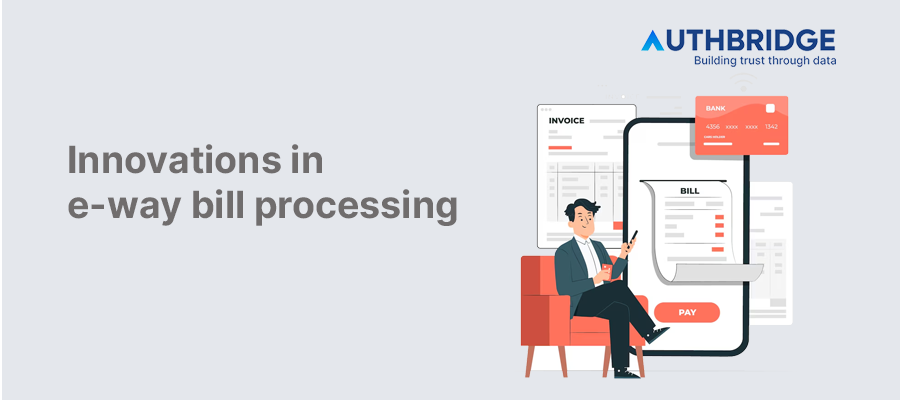Innovations In E-Way Bill Processing: Enhancing Compliance And Efficiency

Evolution of E-Way Bill Systems
The E-Way Bill system has undergone significant evolution since its inception, transitioning from a manual and cumbersome process to a more streamlined, technology-driven operation. Initially, the generation and management of E-Way Bills posed challenges for businesses due to the complexity and time-consuming nature of compliance requirements. However, with the introduction of integrated GST software solutions and online platforms, the process has become more efficient and user-friendly.
Impact of Technology on Compliance
Technology has played a pivotal role in transforming the E-Way Bill process, making compliance easier and more transparent for businesses. Innovations such as cloud-based platforms, mobile applications, and API integrations have enabled real-time data sharing and processing, significantly reducing the likelihood of errors and non-compliance. These technological advancements have not only simplified the generation and management of E-Way Bills but also enhanced the overall efficiency of the supply chain.
Table 1: Technological Impact on E-Way Bill Compliance
Technology | Impact on Compliance |
Cloud-Based Platforms | Simplified access and management of E-Way Bills |
Mobile Applications | On-the-go generation and verification of E-Way Bills |
API Integrations | Seamless data exchange between business systems and the E-Way Bill portal |
Technological Advancements in E-Way Bill Processing
Integration with E-Invoicing
The integration of E-Way Bill systems with E-Invoicing platforms represents a significant leap forward. This synergy allows for the automatic generation of E-Way Bills when an invoice is created, streamlining operations and minimizing manual data entry errors.
Table 2: Benefits of E-Invoicing Integration
Benefit | Description |
Efficiency Gains | Reduces manual data entry and speeds up the bill generation process. |
Error Reduction | Minimizes discrepancies between invoice and E-Way Bill data. |
Compliance Improvement | Ensures real-time compliance with GST regulations. |
Use of Blockchain for Enhanced Security
Blockchain technology offers a decentralized and secure framework for recording transactions, making it an ideal candidate for enhancing the security and transparency of E-Way Bill transactions.
Table 3: Blockchain in E-Way Bill Processing
Feature | Impact |
Immutable Records | Ensures that once an E-Way Bill is generated, it cannot be altered, enhancing trust among stakeholders. |
Transparency | Allows all parties in the supply chain to view transaction histories, reducing fraud and errors. |
Decentralization | Removes the need for a central authority, potentially reducing processing times and costs. |
AI and Machine Learning for Predictive Analysis
AI and machine learning algorithms can analyze vast amounts of data to predict trends, identify compliance risks, and suggest optimizations for logistics and supply chain management related to E-Way Bills.
Table 4: AI in E-Way Bill Management
Application | Benefit |
Trend Prediction | Helps businesses anticipate supply chain disruptions. |
Risk Identification | Flags potential compliance issues before they become problematic. |
Optimization | Suggests routes and logistics strategies to minimize costs and improve efficiency. |
Improving GST Compliance through Technology
Automated Data Reconciliation
Automated tools can compare E-Way Bill data with GST returns and purchase registers, highlighting discrepancies for correction, thus ensuring accurate reporting and compliance.
Table 5: Automated Data Reconciliation Benefits
Benefit | Description |
Time Savings | Automates the labor-intensive process of data matching. |
Accuracy Improvement | Reduces human errors in data entry and reconciliation. |
Compliance Assurance | Helps maintain consistent records across documents, aiding in GST compliance. |
Real-Time Tracking and Analytics
Real-time tracking of E-Way Bills not only ensures the timely delivery of goods but also provides valuable data for analytics, offering insights into operational efficiencies and areas for improvement.
Table 6: Real-Time Tracking Benefits
Benefit | Description |
Operational Insights | Enables businesses to monitor delivery times and identify bottlenecks. |
Decision Support | Provides data-driven insights for strategic decision-making. |
Compliance Monitoring | Ensures that goods are transported within the validity period of the E-Way Bill. |
Future Trends in E-Way Bill Processing
Regulatory Changes and Technological Innovations
As technology evolves, so too will the regulatory landscape surrounding E-Way Bills. Future trends may include more sophisticated integration of AI for compliance monitoring and the adoption of IoT devices for real-time tracking of goods.
The Role of IoT and Big Data
The Internet of Things (IoT) and big data analytics are set to play pivotal roles in the future of E-Way Bill processing, offering unprecedented levels of visibility and efficiency in the supply chain.
Category

Abhinandan Banerjee
(Associate Manager - Marketing)
Abhinandan is a dynamic Product and Content Marketer, boasting over seven years of experience in crafting impactful marketing strategies across diverse environments. Known for his strategic insights, he propels digital growth and boosts brand visibility by transforming complex ideas into compelling content that inspires action.



